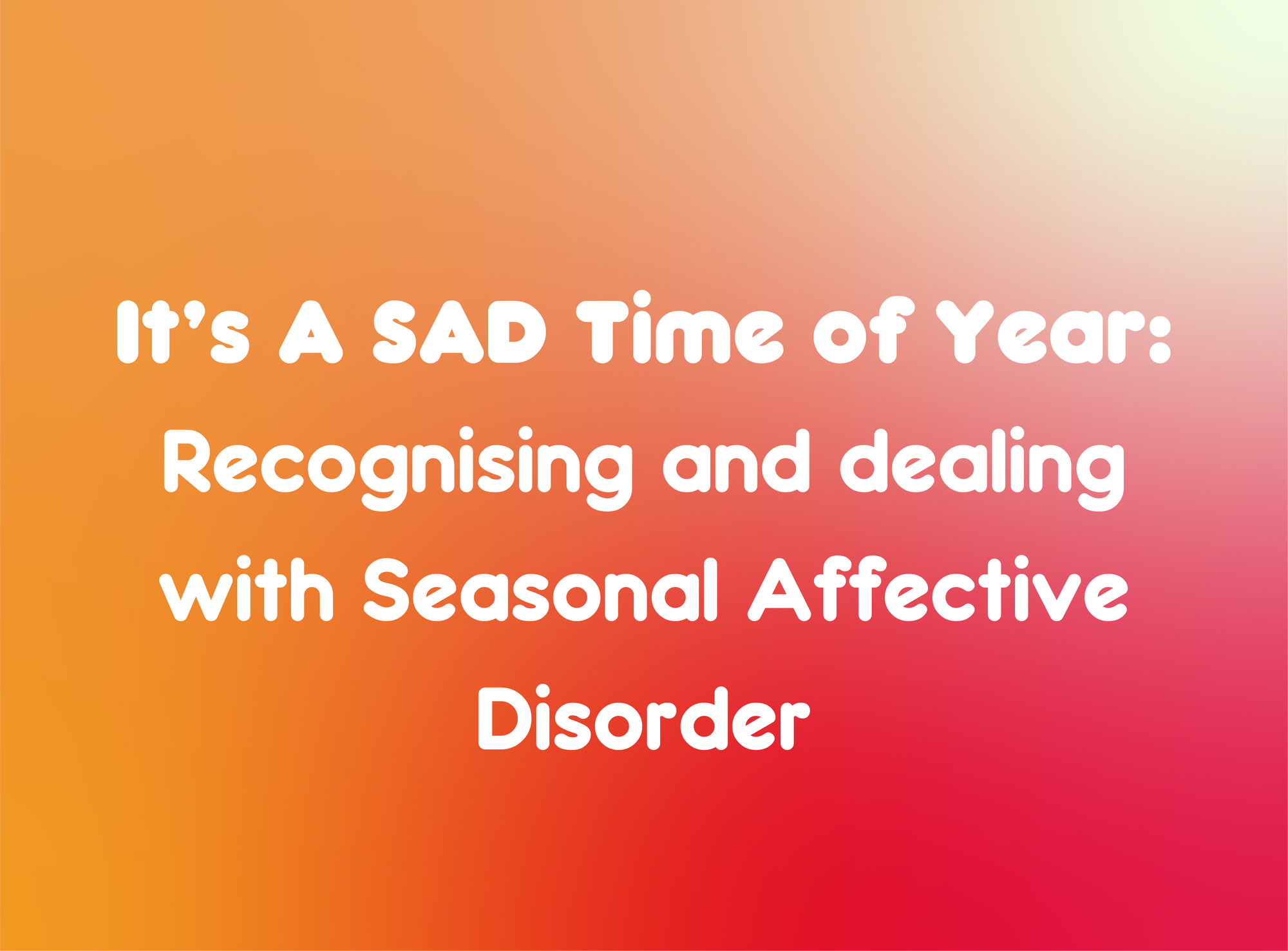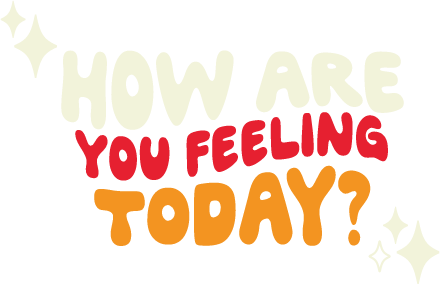
It’s A SAD Time of Year: Recognising and dealing with Seasonal Affective Disorder
DISCLAIMER: I am not a medical professional, so the information I am sharing within this article has been thoroughly researched using medical sources to be able to provide recommended and medically supportive advice.
When we think of the colder time of year, we start to think of autumn leaves and hot coffee, leading into the holiday season full of snow and fluffy jumpers! It can be a joyous and celebratory time of year for millions around the world and a reason to come together as a family. We can play games, play in the snow and enjoy frosty winter walks! But, for some, the autumn/winter months can be the worst time of year.
Whilst there can be much to celebrate, the colder weather, shorter days, reduced sunlight and constant rain can prove too much for some people. That’s why it can be a SAD time of year. SAD stands for Seasonal Affective Disorder which is also known as winter / seasonal depression. There are several reasons this can occur, The following causes have been provided by the NHS:
- production of melatonin – melatonin is a hormone that makes you feel sleepy; in people with SAD, the body may produce it in higher than normal levels
- production of serotonin – serotonin is a hormone that affects your mood, appetite and sleep; a lack of sunlight may lead to lower serotonin levels, which is linked to feelings of depression
- body's internal clock (circadian rhythm) – your body uses sunlight to time various important functions, such as when you wake up, so lower light levels during the winter may disrupt your body clock and lead to symptoms of SAD
So quite often, the reason for SAD can be just a simple chemical imbalance during the darker months. SAD also affects people in different ways; for some, it can simply mean being a little more demotivated and lethargic than normal, but for others, it can be quite a scary and dark time. The one thing that is important to remember, is that just because your symptoms may not be as severe as someone else’s, doesn’t mean you’re not struggling. Someone else’s battles shouldn’t invalidate your own. Of course, some people struggle more and may have worse circumstances, but you’re allowed to feel down.
Now, let’s talk a little about ways we can make things a bit better!
1. Try your best to stick to a schedule - I know this can be easier said than done trust me, my schedule goes out the window a LOT, I just try not to beat myself up for it. But having a schedule can help you prioritise the use of daylight whilst also hewing you to take control of your sleeping schedule. For example, try to avoid late nights (where possible) and get up when the sun rises, ensuring you make the most of the sun!
2. Try to eat at regular intervals - Another common trend to occur during SAD is weight gain. Whilst this should not automatically be considered a bad thing (that’s a whole other issue) weight gain to excess may make you feel even more lethargic. Trying to eat at regular intervals during the day may help you to avoid over-eating. However, the odd snack to cheer you up isn’t a crime, so if you want some comfort food, go for it! If the scales of your diet tip a little that’s okay, don’t beat yourself up if you’re not being as healthy as normal (he says, having just finished a large pizza and a packet of Oreos). Just try to ensure you’re still getting in your 5 a day and the nutrients your body needs.
3. Let the Sun In - Natural light can be one of the world's simplest motivators (for me anyway). Try to let as much light in as possible as it may help you get your day started. A little trick that I’ve learned over the years is that I sleep with my curtains open (now I have skylights I don’t have a choice). It just helps me utilise nature's alarm clock. No, it doesn’t always work, but the least it does is wake me up.
4. Take some Vitamin D Supplements - This is a tip that I followed through with today. I needed to top up my B-12 supplements as I don’t eat red meat, so if you don’t either, here’s your sign to get some B-12. Anyway, I saw some vitamin D supplements on the shelf next to them and remembered, I need that. Most of the Vitamin D that we get we source from sunlight, hence why we have a lack of it during winter. So getting some Vitamin D supplements can be another great way to ease the symptoms a little!
5. Try a SAD Light - Trust me, it’s nicer than it sounds! A SAD light or lightbox uses the theory of light therapy to help alleviate the symptoms of SAD. This artificial light helps to recreate the ‘morning sunlight’ that we tend to experience less of during the winter months. Here are a few UK links:
6. Try Some Exercise - I get it, sometimes this is the last thing you want to hear. Last week when I was on the sofa, hadn’t showered all day, hadn’t eaten and didn’t want to move if someone had told me to get up and go for a run, I would’ve told them to f**k off. So I get it, sometimes our mind gets the best of it and we don’t want to move and that’s okay! But when you do have the better days and feel up to moving, make the most of those endorphins, even if it’s just going for a long walk! Try to go out at least once per day if you can.
7. Try to be As Social As You Can - You’d be surprised how many people suffer from SAD; in the UK around 3 in 100 suffer from the condition. Prioritising being social can help you get out and take your mind off of things, and you never know it may also be helping others around you. Trying to utilise your spare time with interesting and fun activities is one of the best ways to lift your mood, so if you need to work a little less, so be it. Get yourself a boost of serotonin.
8. Mentally Prepare For it - Winter comes around every year, and we know exactly when. So we can take advantage of this by getting our resources prepped early to help us. Take all of the previous steps and get them nice and ready for when the darker months come creeping in!
I hope this has been somewhat helpful for you! All of the sources for this article are linked below. You’re truly not alone in feeling SAD this winter and we will get through it together.
Love ya!
Max
Xoxo
Sources:
https://www.nhs.uk/mental-health/conditions/seasonal-affective-disorder-sad/overview/
https://www.everydayhealth.com/depression/treatment/ways-to-ease-seasonal-depression/
https://www.rcpsych.ac.uk/mental-health/problems-disorders/seasonal-affective-disorder-(sad)
